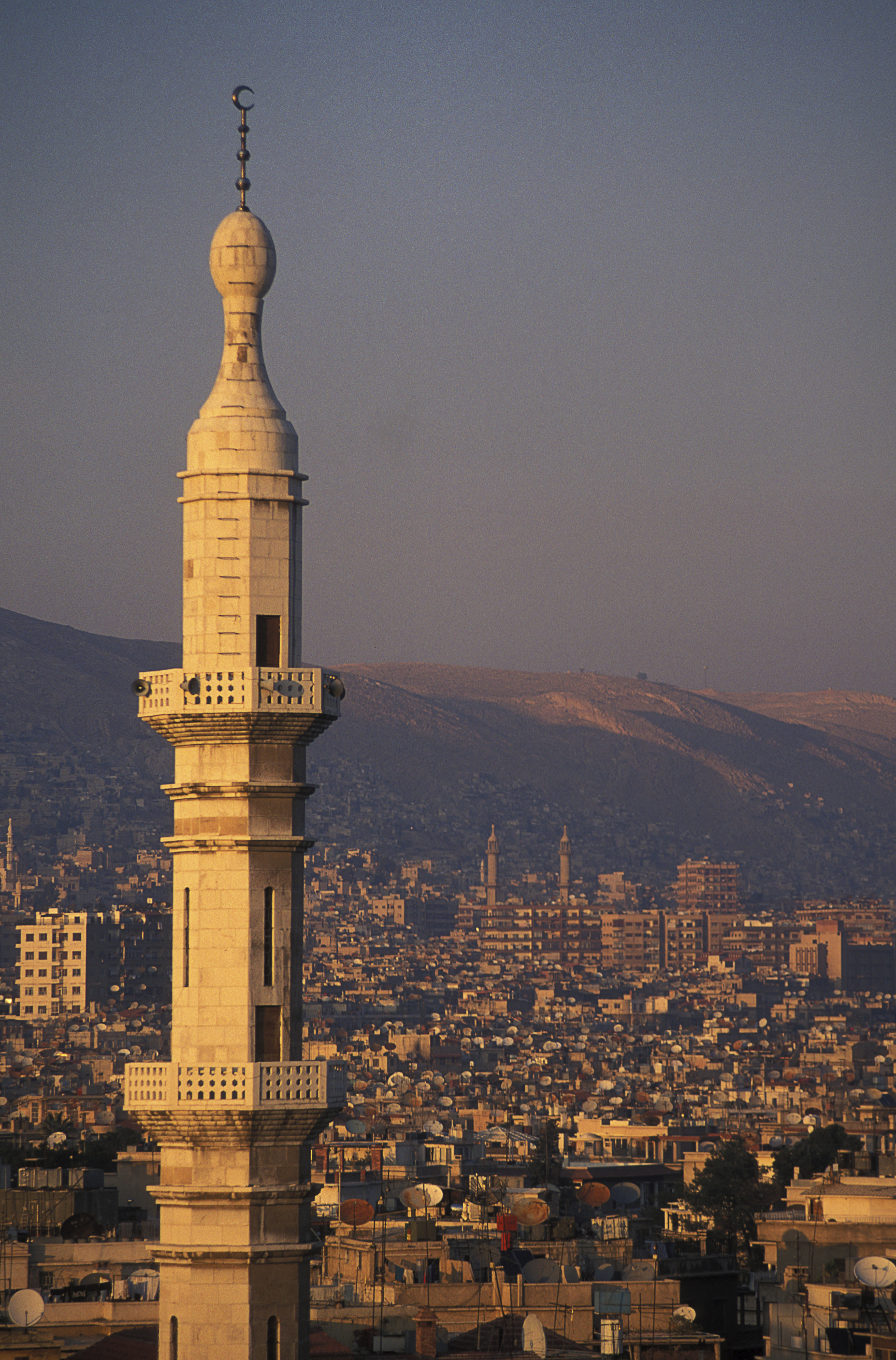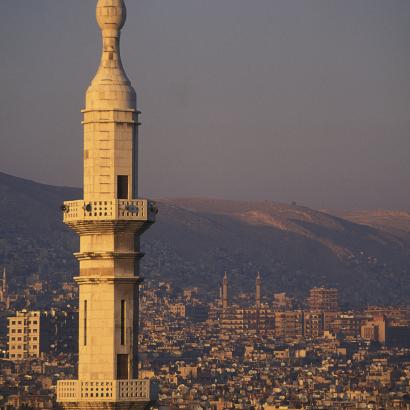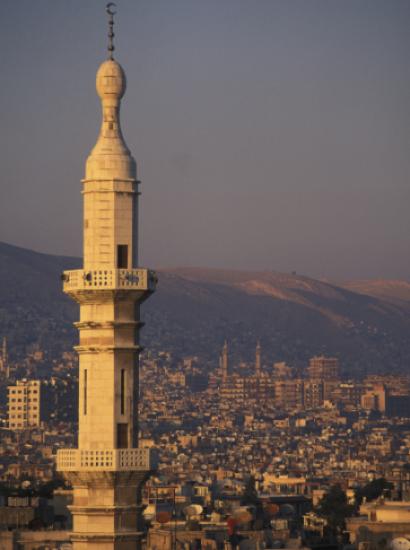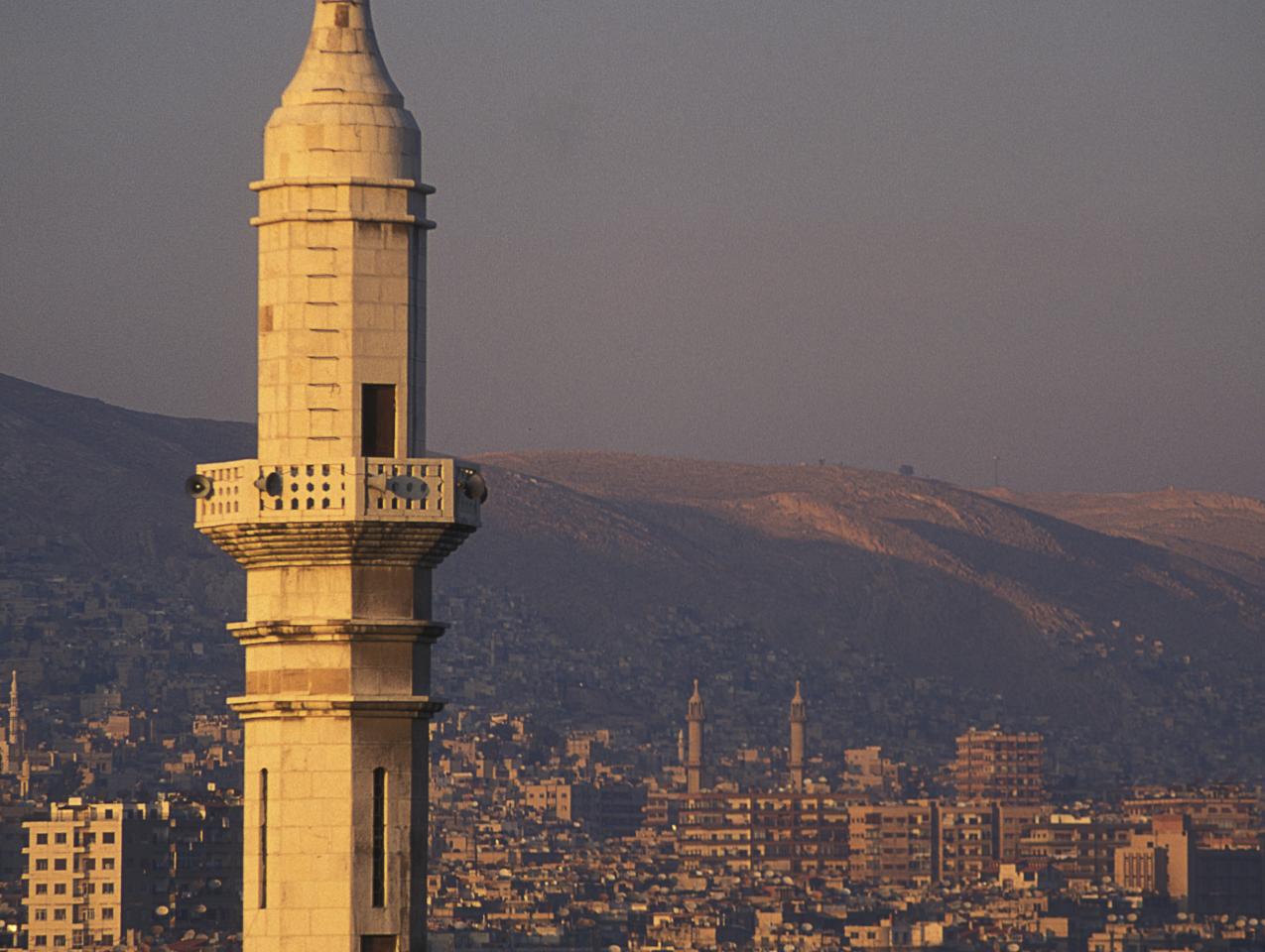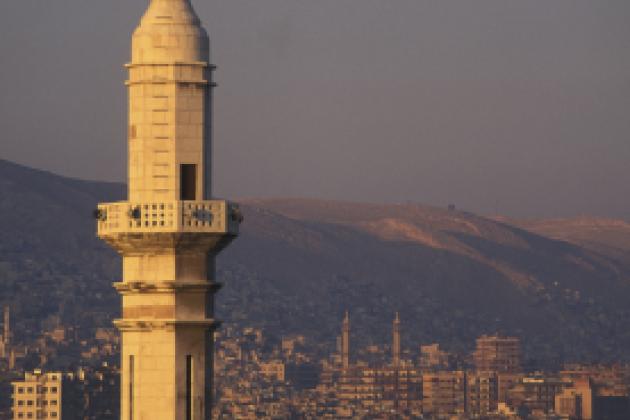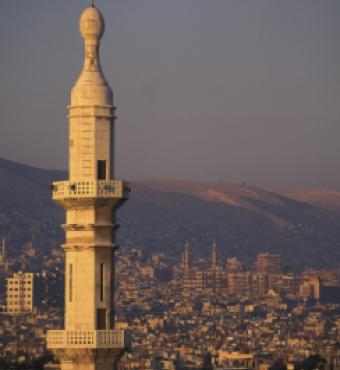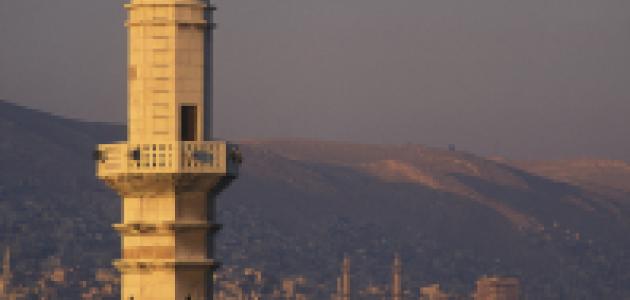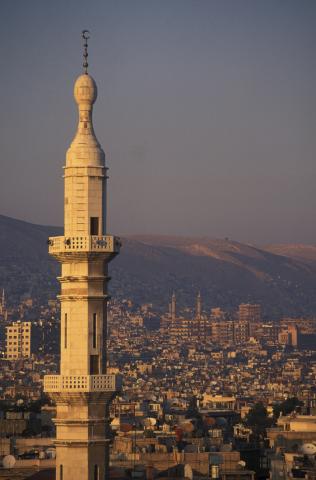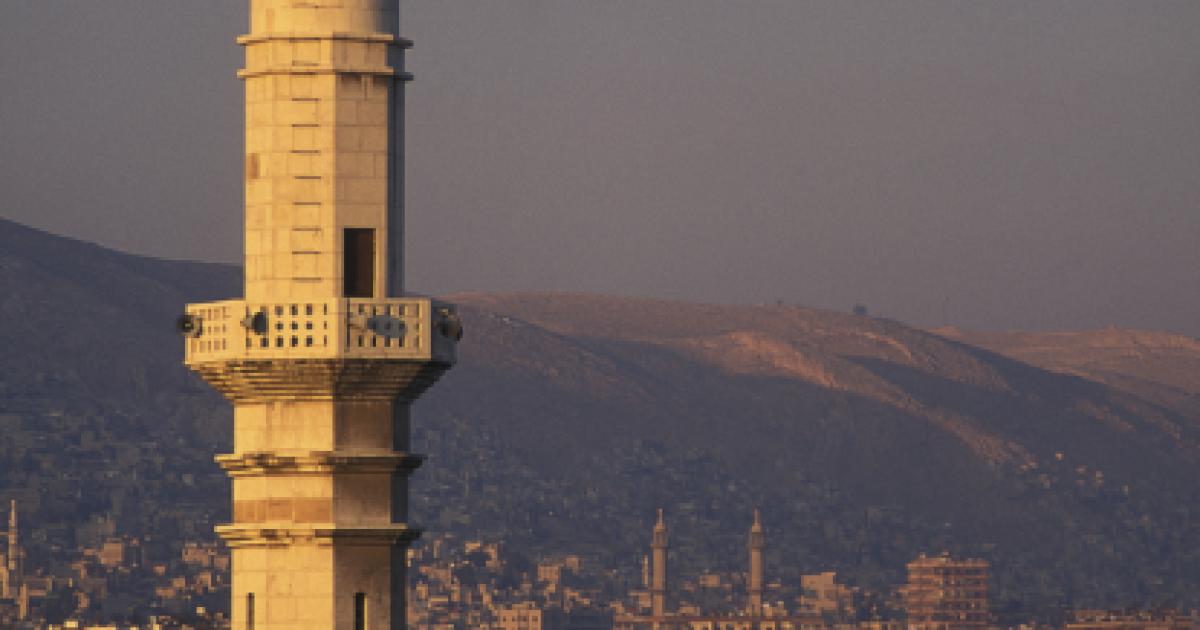The policy debate on Syria has unfortunately been reduced to a discussion of whether or not U.S. troops should remain in that country. What is missing in the debate however is a fundamental reflection on why we should be in Syria at all. Iran should be at the heart of that question.
Unlike any other state actor in the Middle East, Iran seeks to spread its power across the region, controlling regimes in Syria, Lebanon and Iraq that facilitate terrorism, run on corruption, perpetuate a refugee crisis, and smother any whiff of democratic impulse. Yet those regimes are now in crisis, facing a wave of protests. Iran’s greatest exposure is in Syria where it has been spread too thin creating an opportunity for the U.S. to undermine Iran's power. Syria could perhaps be the straw that breaks the Ayatollahs’ backs.
Yet countering Iran in Syria—and in Lebanon and Iraq—is complicated by the legacy of misguided US policies. The Obama administration was focused solely on the “deal with Iran,” and the Syrian rebellion was sacrificed on the altar of that policy. Rather than siding with the anti-Assad rebellion—a rebellion that threatened Iran’s ally in Damascus—the Obama team preferred to side with a Syrian Kurdish militia, the YPG. We are now paying the price of that wrong-headed decision.
The YPG – an entity at the vortex of much of today’s emotional politics – was a fighting force that would rarely confront, and indeed often worked with the Assad regime. It was however a reliable, experienced, ready-made army that would take on ISIS in exchange for territorial gains, legitimacy, and U.S. arms. Its affiliation with the terrorist organization, the PKK was played down by those in the Obama Administration intent on protecting Iran and Assad. As Gen. Votel, the former commander of CENTCOM, recently stated about the YPG “we had finally found the right partner who could help us defeat ISIS without getting drawn into the murkier conflict against Bashar al-Assad’s regime.”
The result has been a profound alienation of NATO ally, Turkey, which has been the target of PKK violence. The legacy policy of siding with forces that do not threaten Iran, i.e., the YPG, has contributed significantly to the current crisis with Turkey.
In the wake of the redeployment of US forces in northeastern Syria, President Trump has stated that we control the oilfields. “Keeping the oil” and preventing the Assad regime and its Iranian ground partners from taking it over is a smart approach. But our deeds on the ground are at odds with the President’s words: currently, the US is protecting our YPG partners who are taking that oil and selling it Assad, indirectly undermining the maximum pressure campaign against Iran. We could alternatively be using access to the oil as leverage against the YPG in order to force it to end its complicity with Assad, Iran and Russia. Yet this would require unravelling the policy mess inherited from the previous administration.
Maintaining a continuous troop presence in Syria has become an article of faith in the foreign policy establishment that has opposed President Trump’s aspiration to limit American exposure and eventually to withdraw. Yet it is often forgotten how recent this commitment to Syria really is. It was Obama who announced that a small temporary contingent of U.S. ground forces would be sent to Syria to fight ISIS in 2015, but it was then Secretary of State Rex Tillerson who announced in Januarya 2018 that a troop presence in northeast Syria would remain indefinitely to be used as leverage in pursuing a political solution that would result in the transition from power of Bashar al-Assad.
The policy announced by Tillerson was the right idea, but unfortunately he announced that policy shortly after most of American leverage against the Assad regime had dissipated due to a disastrous decision to end our support for anti-Assad rebels who were the only force in Syria fighting the Assad regime, ISIS, and Iranian militias. After ending support to the rebels, ground troops which were present in areas where the vast majority of Syria’s oil resources were the last card that Washington had to pressure the Assad regime.
In addition, ending support for those rebels caused them to seek a new benefactor in Turkey which since 2016 was less interested in fighting Assad than the YPG, having been alarmed by the YPG’s rise under the U.S. umbrella. The Turkish approach to the opposition has created problems of its own by strengthening the more Islamist-inclined forces aligned with the Muslim Brotherhood and in some cases Salafi-jihadi groups at the expense of the nationalist and secular groups. It has also moved rebel forces away from fighting Iran and pushed them towards combat with the YPG, leading to disasters like the early 2018 assault on the YPG Kurdish controlled town of Afrin while the Assad regime and Iranian militias continued to expand in other parts of Syria.
Using U.S. forces as leverage to pressure Assad or to remove Iranian forces from the country (as was later stated by then National Security Adviser John Bolton) would have gone to the heart of the problem and should have been the U.S. mission in Syria. Instead, contradictory statements emerged from the Pentagon that would obscure and eventually derail that focus. Despite Tillerson’s stated strategy, and in many respects due to the lobbying of Obama holdovers such as Brett McGurk, the former Special Envoy to Counter ISIS Coalition, the internal debate within the Trump Administration has led to the de facto polar opposite strategy: using U.S. troops in Syria as a blank check to the YPG while doing nothing to pressure Assad. Under such circumstances, the Assad regime and Iran have no real problems with the continued presence of U.S. forces a point best illustrated by the presence of Syrian regime forces alongside both the YPG and U.S. forces in the Kurdish town of Qamishli.
In the wake of the President’s decision, we witnessed an overheated moral outcry that condemned the proposed withdrawal, while never addressing what our mission there should be. There is a strong argument to keep US troops in Syria in order to achieve a political transition, away from Assad and away from Iranian hegemony. However, the President’s critics argued primarily in terms of the need to protect the YPG. In other words, US troops are being kept in Syria to protect proxy forces, the Syrian Democratic Forces (SDF) which have no desire at all to confront the regime in Damascus. On the contrary, both the YPG and many Arab groups in the SDF such as the al-Sanadid are quite comfortable with Assad. General Mazloum, the YPG leader who is the head of the SDF has even explicitly stated that despite his disagreements with the Assad regime, had it not been for the YPG’s understandings with the regime, the regime may have fallen. In the absence of a strategy for political change in Syria, we are keeping troops there to keep it safe for forces that are Iran’s de facto allies, as if we were still carrying out Obama era policies.
It is often forgotten that the YPG took over northeast Syria not through combat with the Assad regime, but through a withdrawal and handover by the Assad regime in July 2012. Assad had shrewdly rekindled ties to the Syrian PKK affiliate early in the Syrian uprising to pressure Turkey, which had supported the Syrian rebellion and opposition forces, to stop backing the rebellion and work with the Syrian government to fight the PKK and secure its borders. This is similar to Assad’s successful strategy in ignoring ISIS on the battlefield and targeting rebel forces to force world powers to see his regime as the lesser evil. However, not in Assad’s wildest dreams did he imagine that both shrewd moves would lead to the U.S. directly supporting the PKK directly on the border with Turkey.
Years on, it is clear that Assad’s strategy has worked. The presence of YPG fighters on the Syrian border has been used successfully as a diplomatic bargaining chip by Russia to bring Turkey closer to it and hence also towards the Assad regime and Iran. Russia, which has also had troops embedded with YPG forces for years, would like nothing more than create conflict between Turkey, a NATO ally, and a the YPG, an American partner force, while painting itself as the mediator to create an outcome beneficial to its and Iran’s interests.
Trump Administration diplomats including Special Representative for Syria and for Countering ISIS Jim Jeffrey and Special Envoy for Syria Joel Rayburn have been working diligently to reach a political settlement between Turkey and the YPG to counter this Russian strategy. Bringing the Turks and the YPG to an accommodation was the only way to reorient the YPG away from Assad. This could have been the first step towards a policy which aimed to use U.S. leverage to achieve U.S. interests in Syria vis-a-vis countering Assad, Russia, and Iran. And the U.S. troop presence could have been used as leverage to bring this about.
In fact, despite Ankara’s disastrous invasion of northeast Syria, and hardline statements from Ankara rejecting negotiations with the YPG, President Erdogan went to Russia following the U.S. withdrawal to attempt to indirectly work out an understanding with the YPG. As recently as 2013, the Turks and the YPG have engaged in direct talks when Saleh Muslim, the head of the PYD (the YPG’s political wing) went to Turkey to meet with Turkish officials. It is often forgotten that even the Kurdistan Regional Government of Iraq which now has excellent economic and diplomatic relations with Turkey was once viewed as a threat by Turkish officials.
In hindsight, Washington could have used its presence in northeast Syria to create an alternative democratic entity in areas under its influence. In return for American protection and the presence of U.S. forces, the YPG could have been required to hold free and open elections of their local councils under U.S. supervision and allow the return of banned Kurdish political parties, civil society groups, and media organizations which had been expelled. Elections would have diluted the power of the YPG which would have helped assuage Turkish concerns. They also would have increased the representation of anti-Assad/anti-Iran Kurds in these regions which would provide a bulwark against the return of the influence of the Assad regime and Iran. Kurds in Syria could also have aspired to a semi-autonomous region of their own under their own control, akin to the KRG in Iraq, but one which was not a PKK-statelet.
If the YPG had not agreed to compete in democratic elections, and allowing back Kurdish and Arab fighters, civil society activities, and political parties it had banned, then the U.S. could have begun a withdrawal from northeast Syria. The threat of leaving was essential leverage that the U.S. had on the YPG that was never used.
Instead a policy consensus developed — and still continues — which supports remaining in Syria under the status quo. This is insufficient. The U.S. presence in northeast Syria was an important example of a partnership with local elements to defeat a terrorist enemy, but Washington’s ISIS-only objective in Syria meant that stabilizing the aftermath was impossible. Already in key Sunni Arab areas such as Deir el Zor and Raqqah, there have been protests against what they see as ethnic chauvinism on the part of the YPG forces controlling their areas. Unflagging US support for the YPG means that we are in effect defending a local regime with no commitment to human rights and opposed by the local population. This does not reflect genuine American values.
The U.S. troop presence in eastern Syria could have been used—and might still be used—to create conditions for a political settlement. But this would require a coordination between a developed strategy and our actions on the ground. The tragedy of American policy in Syria reflects two poor decisions: During the Obama administration our decisions were driven by the priority of appeasing Iran and therefore we betrayed the Syrian rebellion; currently our decisions are driven by primarily by an irrational loyalty to the YPG, therefore alienating Turkey and failing to block Russian and Iranian agendas.
Staying in Syria without using our presence to shape outcomes in ways which further our interests is a mistake. However, leaving Syria and giving up our leverage for free, is not a solution which would further our interests. The U.S. presence in Syria should be used as leverage to bring about a political settlement in terms favorable to U.S. interests, and that means above all undermining the power that Iran exercises via the Assad regime.
Omar Hossino formerly advised former House Foreign Affairs Committee Chairman Ed Royce on Syria last Congress. These views are his own.







